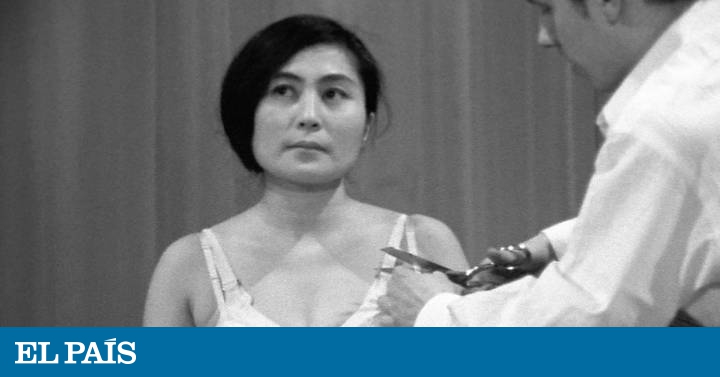A torn canvas lying on the ground invited visitors to step on it and end up smashing it. It was July 1961 and Yoko Ono exhibited her work at the New York AG Gallery, at the age of 28. Foot painting was based on the practice imposed by the Japanese religious authorities during the Tokugawa shogunate (1600-1868), as a means of identifying and eradicating Christians. Christianity was illegal in Japan in the late sixteenth and early seventeenth centuries because it was considered a foreign threat to Japanese sovereignty. Those suspected of being Christians were forced, for more than two centuries, to step on images of Christ or the Virgin Mary. Those who refused were imprisoned and tortured or sentenced to execution.
The Japanese artist collected the historical punishment to treat extreme violence in the idea of the destruction of the appropriate. And of the predictable. Ono is an exceptional phenomenon, which over more than six decades has created a work of overflowing wealth with powerful symbols, such as Reykjavik's Imagine Tower of Peace , a column of light that lights up every year. She is an unclassifiable artist who has escaped even from disciplines, from literature, music, painting, sculpture, installations, cinema and actions. That's also what attracted him to Keith Haring: "Keith has always stayed out of the art world, because his art is the art of the people." Ono had a close relationship with Haring, who liked that he was so approachable, that he had an innate talent for communicating with people.
“The natural state of life and mind is that of complexity. At this point, what art can offer is an absence of complexity, a void through which one is led into a state of complete relaxation of the mind. Then you can go back to the complexity of life, "he wrote in 1966." For me the only sound that exists is the sound of the mind. The only objective of my works is to induce the music of the mind in people ”, he added.
In 1964, in Kyoto, I ride Cut Piece for the first time, which was repeated five more times around the world. At a time when neither artists nor public had become aware of feminism, Ono showed his political perception about it with this performance : a young woman, in Japan at the time, was allowed to undress by a man who cut her clothes with scissors , before an audience made up mostly of men. Ono writes about the latent violence to which he was exposed with the first performance of Cut Piece : “A person took the stage. He took the scissors and made the gesture to stab me. He reached up, grasping the scissors, and I thought he was going to stab me. But the hand remained there, held high, totally still. It is a milestone in the history of performance art, for its radical action against despair. As the philosopher Marina Garcés says, "the meaning of the revolt is not in what it is hoped to achieve, but in the damage that one wants to repair."
Virtual visit: Cut Piece (1964), performance by Yoko Ono. New York MoMA.

